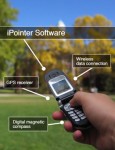Apr 11, 2007
Future Networked Interactive Media Systems and Services for the New-senior Communities
Via Usability News
This Special issue of the Journal of Computers in Human Behavior is a consequence of a UbiComp 06 workshop and looks at understanding crucial design issues of incoming scenarios of pervasive networked systems for elderly people
23:15 Posted in Call for papers | Permalink | Comments (0) | Tags: pervasive computing
Oct 30, 2006
IMAI 2007
Salt Lake City, July 16-22, 2007

From the conference website
In the last few years we have witnessed an explosive growth of multimedia computing, ambient intelligent (AmI), pervasive and ubiquitous computing. The few key technologies interact in an interesting and yet useful way, bringing profound impact and revolution. The revolution is transforming the way people live, work, and interact with each other, and is impacting the way business, government services, education, entertainment and health care are operating.
IMAI 2007 is the continuous of IMMCN (International Conference on Intelligent Multimedia Computing and Networking) series running since the beginning of this century. IMAI 2007 seeks the contribution of high quality papers addressing various aspects of multimedia and ambient intelligence, in particular the techniques that lead the merging of both intelligences, for presentation at the conference and publication in the JCIS(Joint Conference on Information Science) proceeding. For the topics of interest, go to the conference website
The paper should follow the JCIS 2007 ( http://www.jcis.org/jcis2007/ ) paper submission guideline. Seleted high quality papers will be published in Information Science journal.
15:05 Posted in Pervasive computing, Positive Technology events | Permalink | Comments (0) | Tags: ambient intelligence, pervasive computing, positive technology events
Aug 06, 2006
iPointer
Via Textually.org

iPointer is a location-based application developed by Intelligent Spatial Technologies, which allows delivering on-demand information about the user location and surroundings.
From the company website:
"When users wish to identify a landmark, they point the hand-held device and press a button. The iPointer device receives coordinate signals from GPS satellites and orientation information from the digital magnetic compass to identify the user's location and device's pointing angle. These coordinates are then sent over the wireless network to the database. iST's geospatial database's selection algorithms identify the selected landmark and sends information back over the wireless network to be displayed in text, visuals and audio on the user's device"
20:28 Posted in Pervasive computing, Wearable & mobile | Permalink | Comments (0) | Tags: pervasive computing
Aug 04, 2006
Call for papers: Pervasive Computing in Healthcare
From the IEEE Pervasive Computing Journal website
Author guidelines: www.computer.org/pervasive/author.htm
Submission address: http://cs-ieee.manuscriptcentral.com
WIP Deadline: See below
Publication date: January 2007
IEEE Pervasive Computing invites articles about the use of pervasive computing technology in healthcare applications. We welcome papers that focus on novel applications of embedded sensor and actuators as well as user interfaces for use by caregivers and/or patients. We also encourage surveys of available technologies, and reporting on user experiences. Example topics include:
- Sensors and mobile devices for continuous patient monitoring
- Actuators and prompters for rehabilitation and behavior modification
- Mobile and wearable technologies for next generation drug trials
- Intelligent prosthetics
- Medical data-mining from health records
- Privacy architectures for medical records
- Applications for first responders including paramedics and emergency rooms
- Hospital work-flow management
- Intelligent implantable devices for applications in hearing, pain management, etc.
- Devices to monitor dietary intake and/or caloric expenditure
- Technologies for collaborative and/or competitive exercise support groups
- Issues in healthcare technology standards, interoperability, security, usability, cost, etc
Submissions should be 4,000 to 6,000 words long and should follow the magazine's guidelines on style and presentation. All submissions will be peer-reviewed in accordance with normal practice for scientific publications. Submissions should be received by 5 September 2006 to receive full consideration.
In addition to full-length submissions, we also invite work-in-progress submissions of 250 words or less (submit to mmraz@computer.org) These will not be peer-reviewed but will be reviewed by the Department Editor, Anthony Joseph, and, if accepted, edited by the staff into a feature for the issue. The deadline for work-in-progress submissions is 1 November 2006.
Walter Menning, Mayo Clinic
18:00 Posted in Call for papers, Pervasive computing | Permalink | Comments (0) | Tags: pervasive computing
Jul 18, 2006
PhD studentship on pervasive tech - Open University, Milton Keynes, UK
Applicants are welcome for a University-funded PhD studentship at the Open University in the Computing Department to work with Prof. Yvonne Rogers's new research group (who will be joining this summer) at the cutting edge of HCI and pervasive technologies. Topics for research include exploring the benefits of tangibles, physical computing, and shared displays on collaborative activities, such as learning and problem-solving. Candidate must have a background in HCI, cognitive science/psychology or computing.
Starting Date: October 2006.
01:10 Posted in Research institutions & funding opportunities | Permalink | Comments (0) | Tags: pervasive computing






